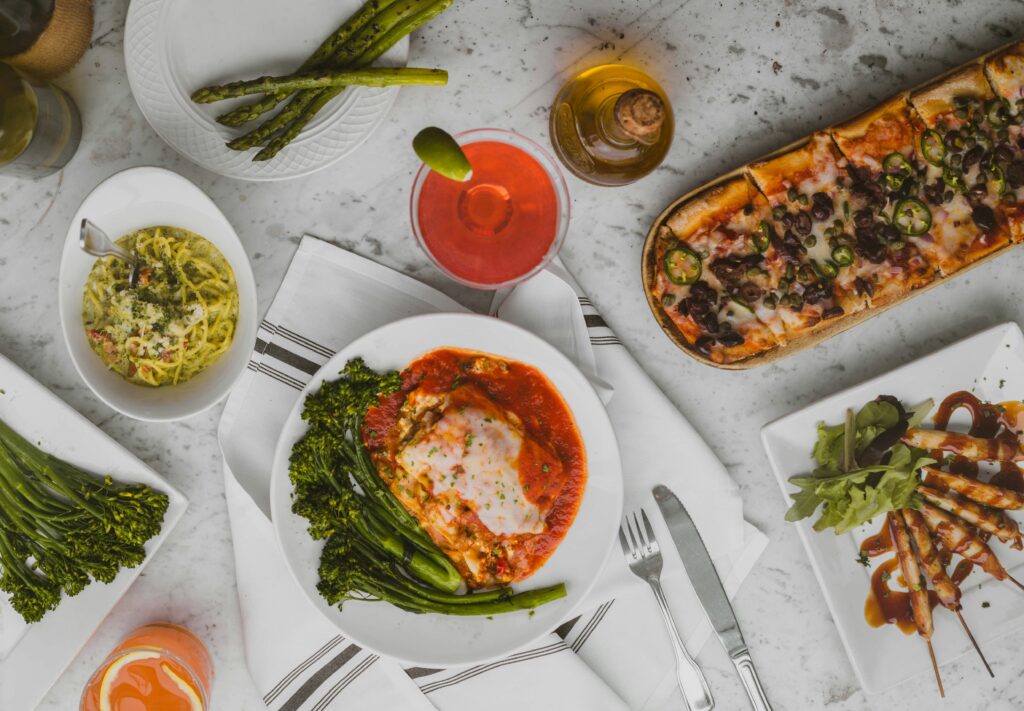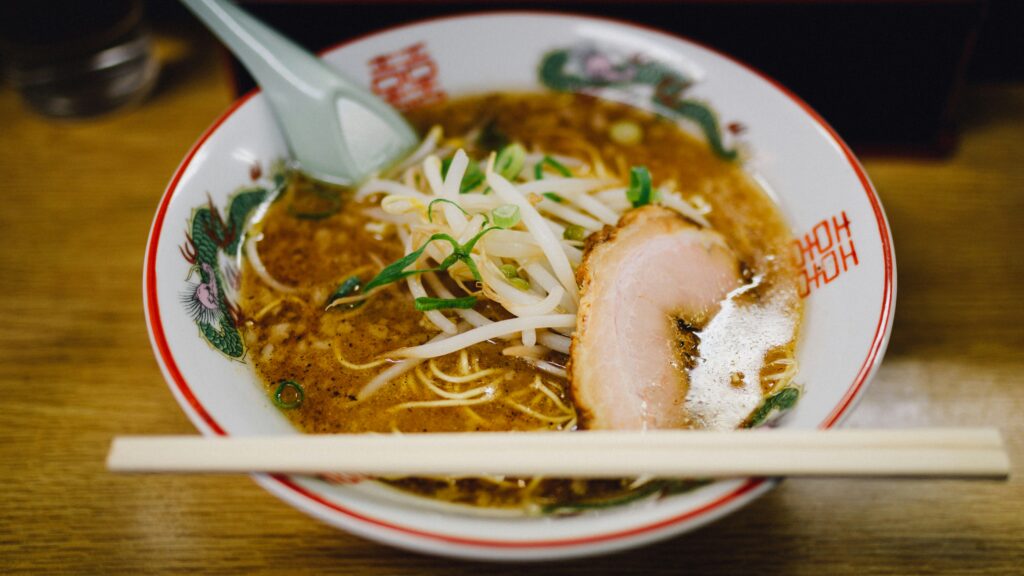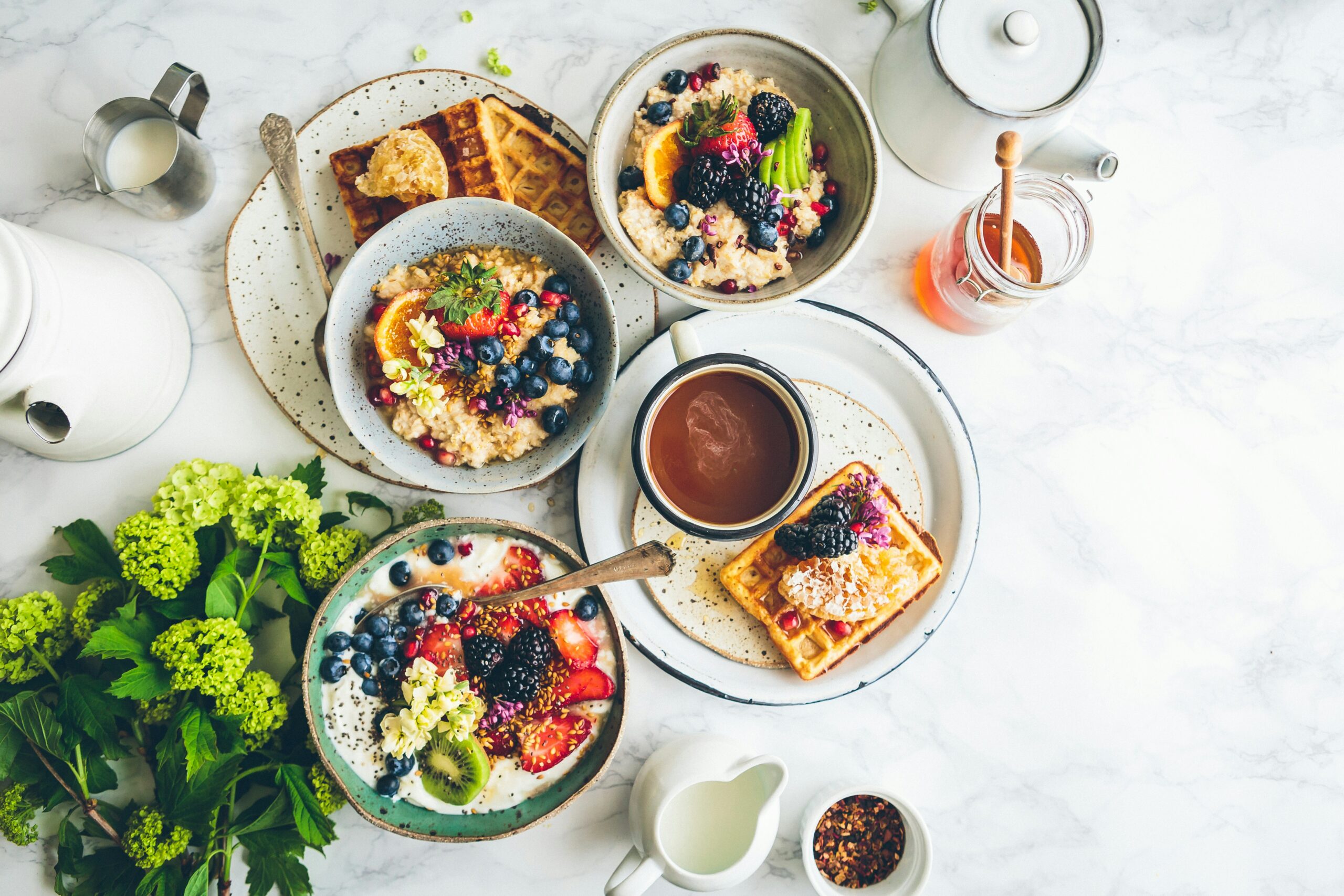Table of Contents
- What is intuitive eating?
- Intuitive eating isn’t always intuitive
- 3 tips for intuitive eating
- Addressing hunger cues: a global perspective
- Bio-individuality and its relationship to food choices
What is intuitive eating?
Intuitive eating is a self-care approach to eating that encourages you to tune into your body’s natural hunger, fullness, and satisfaction cues, rather than relying on external rules or diet restrictions. Also known as the anti-diet approach, intuitive eating promotes a healthy relationship with food by embracing all foods without guilt, rejecting diet culture, and addressing emotional eating with grace and compassion.
The goal is to reconnect with your body’s internal wisdom, fostering trust, balance, and enjoyment in eating while honoring both physical and emotional needs.
Shame has no place in intuitive eating.

Intuitive eating isn’t always intuitive
Intuitive eating doesn’t always feel intuitive. That’s because food and how we eat is more than just what’s on our plate. Our food choices and eating habits are wrapped up in a mindset that has been ingrained in us before we could form words. This includes what we saw our parents and loved ones eat, what we were told was “good” and “bad” for us, what our friends ate and what the media taught us about food. Also, food aversions after being sick and our beliefs about the food industry, shame with certain foods and certain styles of eating being labeled as “civilized” or “barbaric,” etc.
Food is more than what we fill our grocery carts with, it can transport us back to the times in our life when we felt our best, worst, most alive or most ashamed.
I didn’t know anything about intuitive eating when I first started focusing on my nutrition. I was initially told by doctors what to eat based on my celiac diagnosis and then I was told what to eat from Figure Competition coaches who wrote my meal plans. It would be several years and a lot of yo-yoing before I stopped competing and took back control (and learned more about) my eating and what actually helps me feel my best.
This is still a work in progress!
3 tips for intuitive eating
1. Tune into your hunger and fullness cues
When was the last time you felt hungry? Not just feeling like you could eat but a feeling that your stomach was empty and ready for a meal? If you can’t recall that time recently, you may be eating more than your body needs or you may be snacking and not allowing your digestive system to empty and reset.
Start by paying attention to your body’s signals for hunger and fullness.
Before reaching for food, take a moment to assess if you’re genuinely hungry or if other factors (like stress, boredom, or habit) are influencing you. During meals, eat slowly and savor each bite, allowing yourself to feel the textures and flavors. This practice helps you recognize when you’re comfortably full and prevents overeating for a deeper connection with your body’s natural needs.
Addressing hunger cues: a global perspective
The Japanese principle of stopping eating when 80% full is called “Hara Hachi Bu” (腹八分). It originates from the island of Okinawa, where residents have some of the longest life expectancies in the world. The phrase translates to “eat until you are 80% full” and encourages people to practice moderation and mindful eating.

Ayurveda, known as the sister science of yoga, emphasizes eating only as much as the body can comfortably digest. It suggests leaving some space in the stomach – typically dividing it into three parts: one-third food, one-third water, and one-third empty. This promotes smooth digestion and prevents bloating.
2. Practice eating without distraction
Food and entertainment go so well together that most of us aren’t even thinking about distraction-free eating. I admit that I’m not the best at this, especially when I share meals with my husband in front of the tv. But, when I do eat distraction-free, it makes a big difference in my fullness cues, meaning that I don’t eat past feeling full.
I also eat much slower when I focus solely on my meal.
Set aside time to eat without distractions from screens, work, or entertainment. Create a calm environment where you can focus on your plate. Engaging all of your senses while eating helps you become more aware of your food choices, portion sizes, and satisfaction levels. This conscious practice encourages better digestion and allows you to appreciate your food.
Another benefit about eating without distraction is that you can better chew your food. Chewing is important for digestive health. However, you’re more likely to swallow large chunks of food when you’re distracted.
3. Honor your cravings without judgement
Cravings are a natural part of eating and can often provide insight into what your body needs. Instead of labeling foods as “good” or “bad,” allow yourself to enjoy what you crave in moderation. Moderation for me looks different than moderation for you, and that’s ok.
“Cravings are to be indulged in a mindful, appreciative, and savoring manner. And the question, “Am I physically hungry? Is to be used more than ever before.” – Next Steps Worldwide, therapeutic services
How to determine your moderation level
- How much of your favorite food gives you enough to satisfy a craving?
- What environments turn a small craving into a binge fest? How can you adjust?
- Am I craving this from a purely emotional standpoint? If so, what else might help me feel better?
By acknowledging and honoring your cravings, you develop a more balanced approach to eating.
Bio-individuality and its relationship to food choices
Bio-individuality refers to the concept that each person’s body is unique, with different nutritional needs, preferences, and responses to food (in the example of intuitive eating). Factors such as genetics, metabolism, lifestyle, and personal experiences influence how foods affect us all differently. In intuitive eating, understanding your bio-individuality means recognizing that there is no one-size-fits-all approach to nutrition. It encourages you to listen to your body’s unique cues and experiment with different foods to discover what feels best for you.
This blog post cannot begin to describe the full breadth of the choices we make around food; it’s meant to encourage you to get curious about how you fuel your body. I hope you feel inspired to eat in ways that feel best for you and your bio-individuality.


https://shorturl.fm/yfyQM
https://shorturl.fm/E0888
https://shorturl.fm/0KohA
https://shorturl.fm/F30Ha
https://shorturl.fm/gzMhf
https://shorturl.fm/vKJdv
https://shorturl.fm/5hY68
https://shorturl.fm/Va46x
https://shorturl.fm/orhuS
https://shorturl.fm/HhMwY
https://shorturl.fm/jMsPS
https://shorturl.fm/XNwBi
https://shorturl.fm/GPDiQ
https://shorturl.fm/yKJrY
https://shorturl.fm/O4pEW
https://shorturl.fm/qLOvo
https://shorturl.fm/B5EEX
https://shorturl.fm/GCpca
https://shorturl.fm/n3xiu
https://shorturl.fm/GxAVE
https://shorturl.fm/yikjt
https://shorturl.fm/xmly6
https://shorturl.fm/hrzq1
https://shorturl.fm/F9M8I
https://shorturl.fm/Ev2EJ
https://shorturl.fm/Cybm8
https://shorturl.fm/NaPsb
https://shorturl.fm/881LP
https://shorturl.fm/kg2aa
https://shorturl.fm/1rIvH
https://shorturl.fm/o2dJL
https://shorturl.fm/YWEyn
https://shorturl.fm/jq2Yu
https://shorturl.fm/dSIbj
https://shorturl.fm/e7rwM
https://shorturl.fm/Vxgxk
https://shorturl.fm/mw44p
https://shorturl.fm/6w3h5
https://shorturl.fm/lifOd
https://shorturl.fm/uGOzW
https://shorturl.fm/qE3lA
https://shorturl.fm/w8pEX
https://shorturl.fm/LsFLu
https://shorturl.fm/l9aVY
https://shorturl.fm/WVGlt
https://shorturl.fm/lsX1h
https://shorturl.fm/pRiWt
https://shorturl.fm/mGQTp
https://shorturl.fm/50jIS
https://shorturl.fm/LjNQX
https://shorturl.fm/eteJG
https://shorturl.fm/QYh5N
https://shorturl.fm/Yyw1E
https://shorturl.fm/RfKcn
https://shorturl.fm/Wr3h5
https://shorturl.fm/SOeVT
https://shorturl.fm/HUdAz
https://shorturl.fm/KotmC
https://shorturl.fm/Rt7JJ
https://shorturl.fm/7DefW
https://shorturl.fm/UCa7B
https://shorturl.fm/e2dv5
https://shorturl.fm/ve44t
https://shorturl.fm/E7nhK
https://shorturl.fm/BUOyk
https://shorturl.fm/wHaj7
https://shorturl.fm/8eDfj
https://shorturl.fm/c0LOu
https://shorturl.fm/KrGRs
https://shorturl.fm/ZR5Mh
https://shorturl.fm/cV8cn
https://shorturl.fm/7xyOQ
https://shorturl.fm/XU6fH
https://shorturl.fm/YDcwX
https://shorturl.fm/hxP0f
https://shorturl.fm/96ThY
https://shorturl.fm/q6fNA
https://shorturl.fm/anV2W
https://shorturl.fm/QIvqz
https://shorturl.fm/SBl8E
https://shorturl.fm/EnkTw
https://shorturl.fm/gPQDP
https://shorturl.fm/X1fbc
https://shorturl.fm/KqdXw
https://shorturl.fm/PgYeQ
https://shorturl.fm/u3tjq
https://shorturl.fm/iBaPM
https://shorturl.fm/e6ZiS
https://shorturl.fm/br2nh
https://shorturl.fm/baWnq
https://shorturl.fm/CN970
https://shorturl.fm/zSAFU
https://shorturl.fm/DslyE
https://shorturl.fm/Mgu3K
https://shorturl.fm/LNrdZ
https://shorturl.fm/nciEw
https://shorturl.fm/EWbse
https://shorturl.fm/Ls2Nw
https://shorturl.fm/WRgxl
https://shorturl.fm/lRNay
https://shorturl.fm/wMYIU
https://shorturl.fm/pXjuI
https://shorturl.fm/ynDpM
https://shorturl.fm/ADjPd
https://shorturl.fm/aCvI2
https://shorturl.fm/hgvcj
💡 Excellent work on this ultimate guide! every paragraph is packed with value. It’s obvious a lot of research and love went into this piece. If your readers want to put these 7 steps into action immediately, we’d be honoured to help: 👉 https://meinestadtkleinanzeigen.de/ – Germany’s fastest-growing kleinanzeigen & directory hub. • 100 % free listings • Auto-sync to 50+ local citation partners • Instant push to Google Maps data layer Drop your company profile today and watch the local calls start rolling in. Keep inspiring, and thanks again for raising the bar for German SEO content!
https://shorturl.fm/9CR6U
https://shorturl.fm/s94gK
https://shorturl.fm/0J4jT
https://shorturl.fm/yD5ra
https://shorturl.fm/nHDwf
https://shorturl.fm/4OjAV
https://shorturl.fm/e0301
https://shorturl.fm/RyXkL
https://shorturl.fm/pglac
https://shorturl.fm/OnLuX
https://shorturl.fm/CEwrq
https://shorturl.fm/4oTgm
https://shorturl.fm/UKfWH
https://shorturl.fm/qMftN
https://shorturl.fm/oyfjT
https://shorturl.fm/OEgcg
https://shorturl.fm/xQ5X6
https://shorturl.fm/XL29m
https://shorturl.fm/pKfqv
https://shorturl.fm/H21I1
https://shorturl.fm/HjcKr
https://shorturl.fm/z5DLA
https://shorturl.fm/3MUcW
https://shorturl.fm/U7IEP
https://shorturl.fm/u5HJO
https://shorturl.fm/27LcR
https://shorturl.fm/9VOAK
https://shorturl.fm/TVJ6Y
https://shorturl.fm/BhwbR
https://shorturl.fm/0EVE4
https://shorturl.fm/2gIY7
https://shorturl.fm/omem5
https://shorturl.fm/4YjSh
https://shorturl.fm/UqWc7
https://shorturl.fm/pq6KU
https://shorturl.fm/Ndczs
https://shorturl.fm/BTUV6
https://shorturl.fm/ZIho1
https://shorturl.fm/85Jqd
https://shorturl.fm/jMsMc
https://shorturl.fm/n6Khe
https://shorturl.fm/KdtNJ
https://shorturl.fm/CdA6v
https://shorturl.fm/T3rZ7
https://shorturl.fm/Svwl5
https://shorturl.fm/hZAhO
https://shorturl.fm/Pf2qj
https://shorturl.fm/7H4L9
https://shorturl.fm/96Xnn
https://shorturl.fm/gnW7J
https://shorturl.fm/4u9hg
https://shorturl.fm/ZNGNT
https://shorturl.fm/2SFUz
https://shorturl.fm/tOb8M
https://shorturl.fm/xlMo3
https://shorturl.fm/DoTuM
https://shorturl.fm/CWISK
https://shorturl.fm/hm5db
https://shorturl.fm/VkBCh
Hi my family member I want to say that this post is awesome nice written and come with approximately all significant infos I would like to peer extra posts like this
https://shorturl.fm/v4V2s
https://shorturl.fm/6U2w0
https://shorturl.fm/6WE4m
https://shorturl.fm/O3XLX
https://shorturl.fm/15X2R
https://shorturl.fm/Q4CcT
https://shorturl.fm/OnFWs
https://shorturl.fm/OnFWs
https://shorturl.fm/tmiw0
https://shorturl.fm/3ZRfk
https://shorturl.fm/cy5Hk
https://shorturl.fm/HgHWY
https://shorturl.fm/qIrdG
https://shorturl.fm/HDClH
https://shorturl.fm/GPBaY
https://shorturl.fm/isDwQ
https://shorturl.fm/KzPm6
https://shorturl.fm/dSWLE
https://shorturl.fm/h8MnX
https://shorturl.fm/qfIKM
https://shorturl.fm/HcenR
https://shorturl.fm/4MJDb
https://shorturl.fm/HL2Oc
https://shorturl.fm/vVpDr
https://shorturl.fm/dIiBG
https://shorturl.fm/9Iumg
https://shorturl.fm/K6Nu4
https://shorturl.fm/JOht1
https://shorturl.fm/Nov0t
https://shorturl.fm/6oMTE
https://shorturl.fm/wlDAN
https://shorturl.fm/9brkO
https://shorturl.fm/QR2Mi
https://shorturl.fm/0rTtK
https://shorturl.fm/OrRHM
https://shorturl.fm/EAH9c
https://shorturl.fm/7DBhx
https://shorturl.fm/jzAUP
https://shorturl.fm/DPMFt
https://shorturl.fm/s6JBa
https://shorturl.fm/WSBKC
https://shorturl.fm/YHtwG
https://shorturl.fm/mEYxV
https://shorturl.fm/LpgkJ
https://shorturl.fm/dKpEu
https://shorturl.fm/HGl5k
https://shorturl.fm/fmlRU
https://shorturl.fm/chjAr
https://shorturl.fm/baIq7
https://shorturl.fm/ybhCI
https://shorturl.fm/eVYtQ
https://shorturl.fm/x0dtv
https://shorturl.fm/zZjFh
https://shorturl.fm/eyFBu
https://shorturl.fm/9JND7
https://shorturl.fm/mAjqC
https://shorturl.fm/mJEii
https://shorturl.fm/KUIWn
https://shorturl.fm/ESpjT